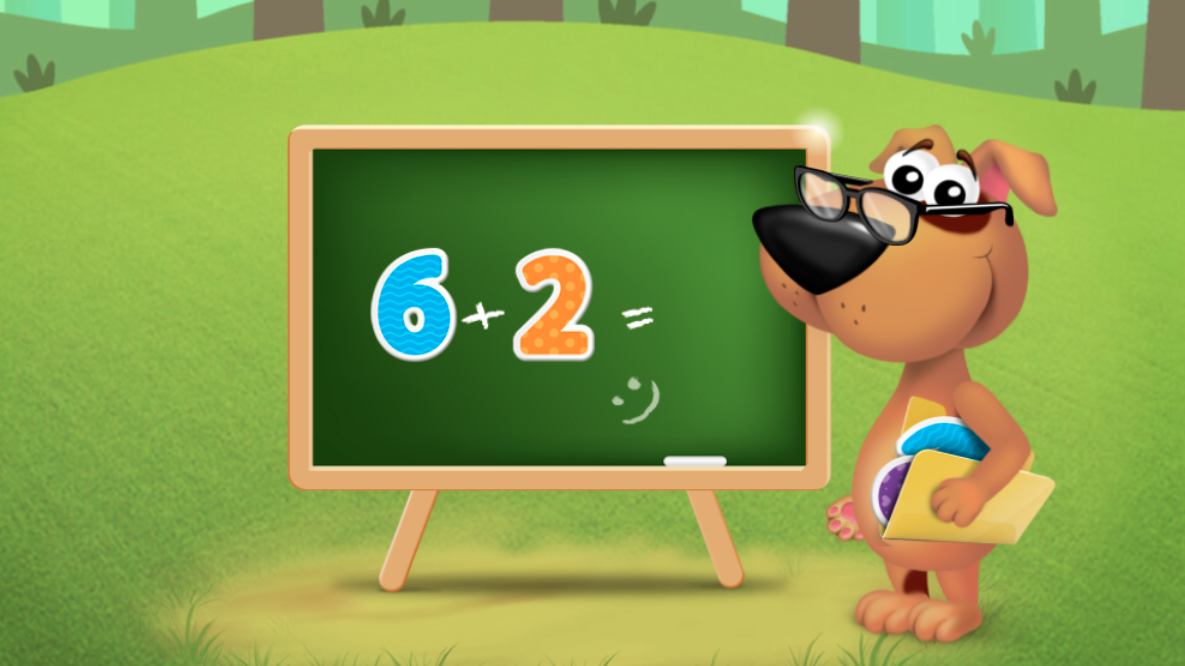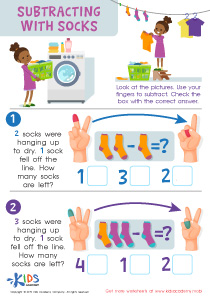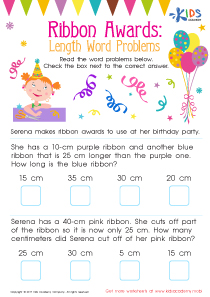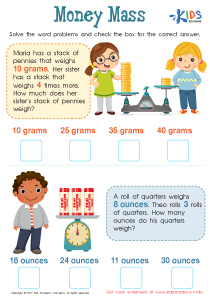Printable Time Word Problems Worksheets With Answers
1 filtered results
-
From - To
Answer Keys for Time Word Problems Worksheets for Preschool
Introduce your preschoolers to the exciting world of time-telling with our enchanting Time Word Problems worksheets! Perfectly tailored for young learners, these school worksheets are designed to engage and educate children through delightful exercises that blend learning with fun. Each worksheet features simple, age-appropriate problems that help children grasp the basics of time, from hours to half-hours. These colorful and interactive pages not only enhance mathematical skills but also improve reading and comprehension abilities. Ideal for both classroom use and home practice, our Time Word Problems worksheets are a superb resource for sparking your little ones' curiosity and building a strong foundation in early math skills.
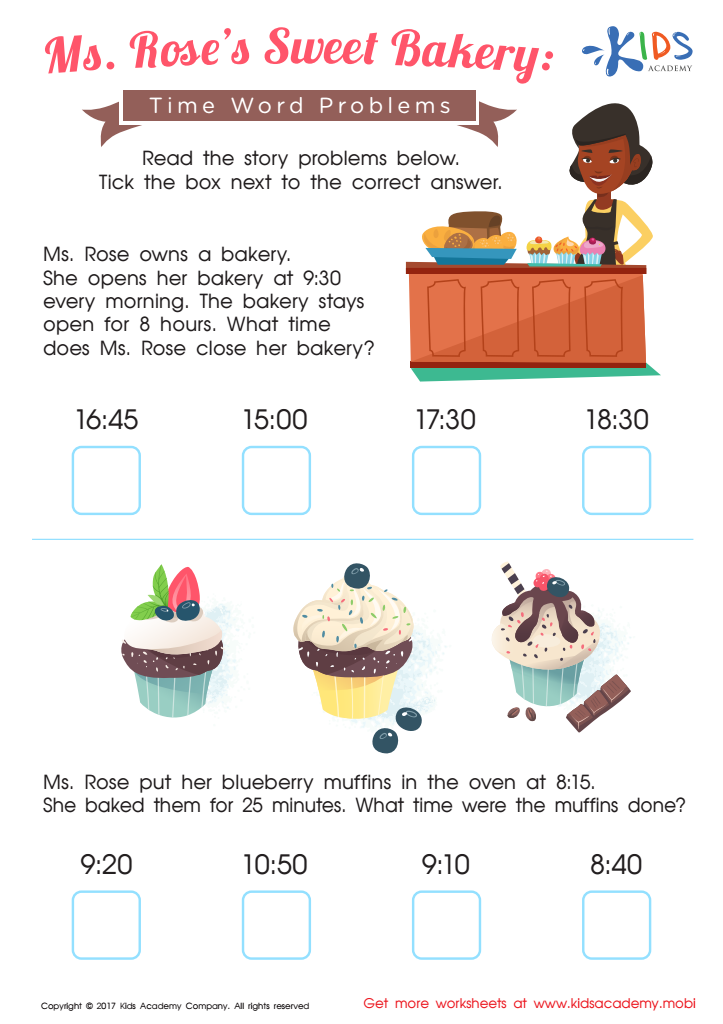

Ms. Roseв's Sweet Bakery Time Worksheet
The Value of Time Word Problems in School Printables for Preschoolers
In the early stages of education, developing a child's ability to grasp basic concepts of time is as crucial as learning alphabets or numbers. School printables, especially worksheets on Time Word Problems, are instrumental tools for preschool teachers and parents aiming to cultivate this essential skill in young learners. Here’s why these resources are invaluable in a preschooler’s learning journey.
1. Introduction to the Concept of Time
Time is an abstract concept, and introducing it to preschoolers can be challenging. School printables that include time word problems are designed to simplify this concept, making it more tangible for young minds. By relating time to everyday activities, such as the duration of a lunch break or the time taken to clean up toys, children can begin to understand time in a context that is meaningful to them.
2. Development of Mathematical Thinking
Time word problems in school printables do more than teach children about hours and minutes; they also lay the groundwork for mathematical thinking. These worksheets encourage children to solve problems, predict outcomes, and understand sequences. This early exposure to problem-solving and logical thinking is crucial in nurturing young mathematicians.
3. Enhancement of Reading and Comprehension Skills
Even at the preschool level, time word problems require some level of reading. These school printables combine the learning of time with reading comprehension. As children read through the problems, they learn to pick out key details that are necessary for solving the questions. This dual focus not only enhances their reading skills but also improves their ability to comprehend and follow directions.
4. Boosting Confidence with Practical Skills
For preschoolers, mastering the ability to tell time is a significant achievement. It boosts their confidence and gives them a sense of independence. By using school printables focused on time word problems, children get repeated practice and reinforcement, which is essential for mastering any new skill. As they improve, their confidence in their abilities grows, encouraging a positive attitude towards learning more challenging concepts.
5. Preparation for Future Academic Success
The benefits of engaging with time word problems at the preschool level extend beyond the immediate understanding of time. These activities prime children for future academic endeavors. The skills they develop — from time management and problem-solving to logical thinking and reading comprehension — are foundational for success in later years of schooling.
6. Interactive and Engaging Learning
Pres chool printables with time word problems are often designed to be visually appealing and interactive, which is perfect for preschool-aged children. These worksheets may include colorful images, cut-out activities, or even interactive elements that require children to draw the hands on a clock or match times with daily activities. This kind of hands-on learning not only makes the process more engaging but also aids in better retention of the information taught.
7. Facilitating Routine and Structure
Understanding time helps children make sense of their daily routines, such as knowing when it’s time to wake up, eat, or go to bed. School printables that tackle time word problems help reinforce these daily routines by associating them with specific times. This not only makes their day predictable and structured but also eases the management of transitions between different activities, which is a common challenge in preschool settings.
8. Encouraging Parental Involvement
Time word problems in school printables are a fantastic resource for parents looking to be more involved in their child’s early education. These worksheets provide a straightforward means for parents to engage with their children academically. Working on these problems together at home can help reinforce the concepts learned at school, while also allowing parents to observe and understand their child’s learning style and areas where they might need extra help.
9. Adaptability to Individual Learning Paces
Not all children learn at the same pace, and school printables with time word problems can be easily adapted to suit individual learning speeds and preferences. Teachers and parents can choose from a variety of worksheets that range in complexity and focus, depending on the child’s comfort and skill level with the concept of time. This tailored approach helps ensure that each child can progress at their own pace without feeling overwhelmed or disinterested.
10. Building a Foundation for Time Management
Early education on time does not only help children understand the clock or the sequence of daily events; it also sets the stage for effective time management skills later in life. As children learn to associate specific times with activities, they inadvertently pick up on the importance of planning and allocating time appropriately. These are skills that will benefit them throughout their academic and professional futures.
In conclusion, school printables featuring time word problems provide a multifaceted educational approach that benefits preschoolers in numerous ways. From introducing fundamental concepts of time to enhancing critical thinking and independence, these resources are essential in setting a strong foundation for young learners. By integrating such engaging and practical tools into early childhood education, teachers and parents can ensure that children not only learn about time in an abstract sense but also understand its application in everyday life. This holistic approach to learning helps in nurturing well-rounded individuals who are prepared for the complexities of future educational demands and life challenges.
Furthermore, these worksheets can be used creatively in the classroom setting to inspire group activities or collaborative learning sessions. For example, teachers might set up a mock schedule for a day and have children work together to solve related time problems, or they might create games that require students to match specific activities with their corresponding times. Such interactions promote social skills and teamwork, while also making the learning process more enjoyable and memorable.
Ultimately, by effectively utilizing school printables that focus on time word problems, educators and parents are equipping preschoolers with more than just the ability to read a clock; they are fostering essential life skills such as critical thinking, self-reliance, and effective communication. These are the building blocks for lifelong learning and success, making the use of such educational resources a wise investment in any child’s future.
 Assign to My Students
Assign to My Students



